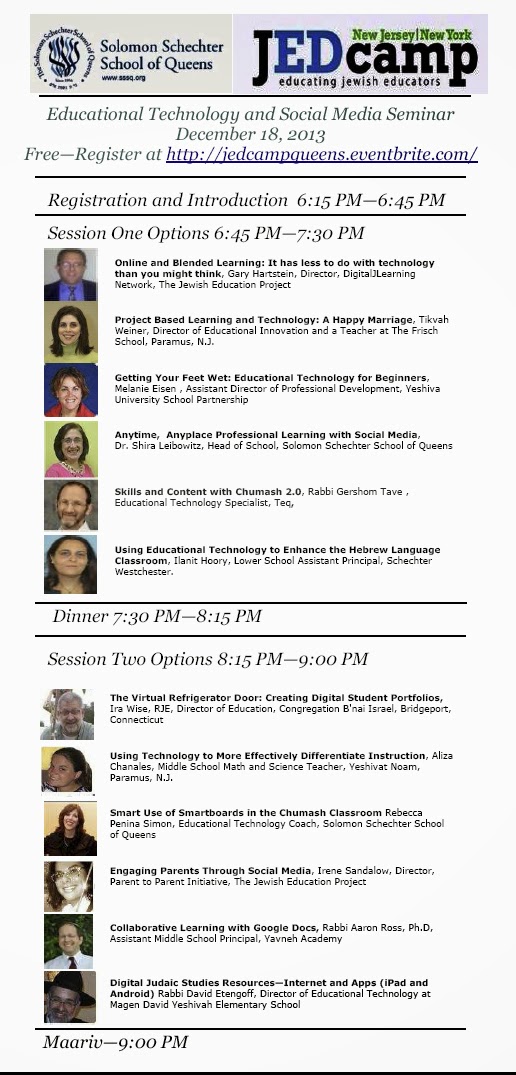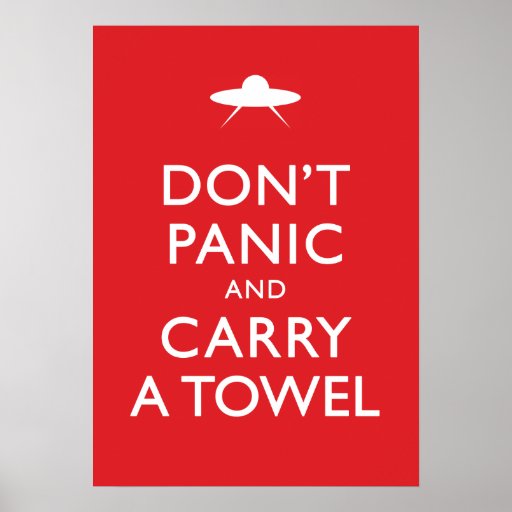Joel Lurie Grishaver is my teacher, mentor and friend. He is also a titan in Modern Jewish Education, and he freed us from the tyranny of the Stickmen and that holidays could be happy without a semi-fictional character celebrating them for us. He published this today on the
Torah Aura Bulletin Board - to which you should be a subscriber. While I think there is a bit more to be learned from the Pew report, I think Joel makes some very important and interesting points - particularly, #2, 4 and 5. What do you think?
The Last Pew Reply by Joel Lurie Grishaver
MY FATHER (z”l) once designed what he considered to be the ultimate North American synagogue. It had all the usual stuff and only one pew in the back. This was exactly where most people wanted to sit. When it was full, the weight triggered a spring, that tripped a switch, which started a motor, which brought the pew to the front of the hall, exactly where the Rabbi wanted it. Then a new pew popped up in the back.
The Pew Study
Every ten years (more or less on the decade) the
Jewish Federations of North America would run a
National Jewish Population Study. After a disastrous experience with the 2010-2011 study, the Jewish Federations of North America said that they would never do another such study. This year, because of that void, the
PEW Foundation did a
national Jewish study of their own.
Virtually every Jew in North America with a keyboard and a place to be read has already written about the PEW study and its finding. I feel like this is the last PEW. If you want to read a good summary of the reported findings read
Samuel Heilman. The most important critical article, one that PEW responded to, was written by
J.J. Goldberg. You can google the back and forth. I believe that the most important piece was written by
Dr. Ari Kelman.
Kelman argues that the most amazing finding of the PEW study and the previous NJPS finding is that while we have developed a very refined language about Jewish religious behavior, we have developed no categories to look at Jewish identity that is cultural and secular. The PEW study found that 70% of present North American Jews fall into this slot. I am basing my piece on Ari’s article.
The Pew Study and Jewish Education
The majority of North American Jews who presently receive a Jewish education do so in a Congregational School, a.k.a. a Complementary School, a.k.a. a Secondary School, a.k.a. An Afternoon School, a.k.a. The Drop-Off School, a.k.a. the Religious/Religion School, and a.k.a. the Hebrew School. The very insecurity in naming this portion of Jewish education reflects our discomfort with it, hence, our need to constantly re-label it. The most derogatory of these names, The Drop-Off School indicates that all students get to Day Schools and Community schools without parental involvement.
Most Hebrew schools are run under synagogue auspices. Most Day Schools also have religious orientation. Secular orientations/cultural orientations could be found only in the old Talmud Torah system and may be reflected in their namesakes—and in a few/but not all communal day schools.
Most Jewish education is centered in the families we serve—who are synagogue members, rather than reaching towards those we do not—cultural and secular Jews.
We labor under the assumption that Bar/Bat Mitzvah is the golden key to the City of Jewish Life. We shorten and cut everything else and tend to leave prayerbook Hebrew intact. That assumption is good if we want to raise future synagogues Jews and maybe just that which, synagogues want to underwrite. But, if we are going to meet the desires of most Jews—it is just the wrong pattern.
The following is my retelling of a story that Roberta Louis Goodman tells (
and we published from the North Shore Congregation Israel Bulletin). Roberta and I disagree over its meaning, but I have included her complete telling in the TAPBB and here use mine for my purposes.
One day at CAMP@NSCI, her Religious school, a 3rd grader named Leo started playing some piano. Robert compliments his play. He says, “I play guitar, too.” His mother says, “I want him to learn to play some Jewish songs.” Roberta responds without hesitation, “I can make that happen.” She finds a skilled senior from the cantor’s choir to teach guitar (during Hebrew school). By the time the class happens the next week, by telling the story, the cantor telling the story, and the sending of an e-mail, she has ten students and a few more teachers. Now she is preparing to teach Jewish music to more instruments and adding a visual arts option.
When I tell the story I emphasize “Jewish music” and guitar—a secular/cultural option. When Roberta tells the story she labels the program “Prayer Jam” and sees it as another path to liturgy.
Pew and Looking Towards the Future of Jewish Education
So what would it mean to focus on Jewish educational outreach on cultural rather than religious Jewish Identity? Here are a few thoughts:
- Decouple synagogue membership from school registration and do not remove community or synagogue support. Think about the old secular Kibbutz Bar/t Mitzvah where a child was dropped in the Negev with a knife and told to find his/her way home. Link Religious and Secular silos.
- Add communicative Hebrew to the prayer centric Hebrew we tend to be teaching. I have heard it argued that we no longer have enough time to teach prayer-Hebrew. Two thoughts: (1) what is the problem with compounding failure if we are already bound to fail and can meet some needs in the process, and (2) perhaps with less God we can get some more time. We may be misunderstanding the calls for less as being time centric when in fact they may be religiophobic. Think Canada, think the old LA Hebrew High model, school credit for foreign language studies. Think of Hebrew School with a Hebrew Charter School option. Add a bit of communicative Hebrew to the prayer-Hebrew exclusive and our teachers, our students, and many of our families will be happier.
- Piaget teaches that students can’t understand the causality (or sequence) of history before seventh or eighth grade. That took history out of a lot of schools that used to have a 4th, 5th, 6th grade progression. Forget about cause and effect and eliminate any hope of sequence and put history back as a sequence of stories—narrative.
- The arts.
- Teach an apolitical Israel for a while. Think Humus not Hamas. Real Politick can come later. Israel is a foodies’ dream. It is music, art, cartography, major products, sports, democracy, dance, fiction, poetry, and a lot of great learning that doesn’t deal with chosen, settlements, and God. It is true that we can study Israel via siddur references, but we don’t need to. Desalinization and creative water technologies don’t have to link with terrorism or the territories. Israeli current events can be taught later. A-Zionist need not be Non-Zionist.
- It is hip to talk about Jewish Journeys. As schools we believe in many paths. It is time to consider a number of them that meet the needs of the majorities of North American Jews. A perfectly significant Jews life does not take prayer, kashrut and leaps-of-faith. Workman’s Circle was never Ethical Culture.
I can recommend lots of Jewish options and still be in my synagogue every Saturday morning. I agree that recovery may take a higher power, but Jewish identity does not—unless we insist upon it. All we got to do is look certain results. Steven A. Cohen, Arnie Eisen, and Ari Kelman have been foreshadowing these insights for a long time. I may be in the last PEW, but we get to decide where we will let it wind up.








